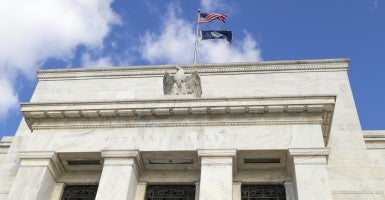The Federal Reserve should stop trying to stimulate the economy for two reasons. First, the policies it has enacted so far have contributed very little to the economic recovery. Second, it likely has reached the limits of what monetary policy can do to boost the economy.
The Fed’s unconventional “quantitative easing” programs have filled the banking system with excess reserves. The federal funds market — the lending market where banks borrow and lend all those reserves — now contains nearly $3 trillion in excess reserves, all ready to go but with hardly any takers.
Why haven’t these excess funds been put to some good use, such as being lent out? Part of the reason might lie with the Fed’s decision to pay interest on these reserves. Why should a bank risk lending to a startup business when it can make money just sitting on the money? And there’s no doubt factors beyond the Fed’s control, such as general economic weakness around the world, have inhibited lending as well.
Recently bank lending has picked up. But that’s something we would expect after a financial crisis. Even so, most of the “new” money the Fed injected into the banking system is still sitting at the Fed. It simply hasn’t made it into the broader economy even though employment and nominal spending have rebounded.
In reality, the most anyone could have expected from expansionary monetary policies was a short-term boost to the economy. But nearly six years into quantitative easing that “short term” is likely past. Historically, increases in the money supply can boost nominal economic growth but not price-adjusted “real” growth.
Even that temporary boost sometimes derived from “easy money” creates risks, for one must then hope that the central bank can tame inflation in the aftermath. Economists disagree on the exact amount of time that separates short-run versus long-run effects, but we’re past the five-year mark now. That’s not the short run.
To truly stimulate economic growth, the best option is to make fiscal and regulatory changes that lead to structural improvements in our economy. The fact that the Fed now has more than $4 trillion on its balance sheet — more than five times the amount it had prior to the crisis — only prolongs these types of changes.
The QE approach to stimulus has created serious economic hazards. The Fed now owns more than one-third of all outstanding Treasuries. This means the nation’s central bank is more and more deeply involved in financing the government. That makes it both more difficult for the Fed to conduct normal monetary policy and more likely that future Fed actions will be driven by political, rather than economic, considerations.
Given the current fiscal situation in the U.S., the amount of assets on the Fed’s books and the corresponding potential losses, it’s imperative that the Fed start to reverse its QE purchases. These purchases have demonstrably failed to kick-start the economy. Better to pull the plug on QE and concentrate on tax and regulatory reforms that can create a climate conducive to vibrant economic investment and expansion.
Originally distributed by Trib Total Media, Inc.






























